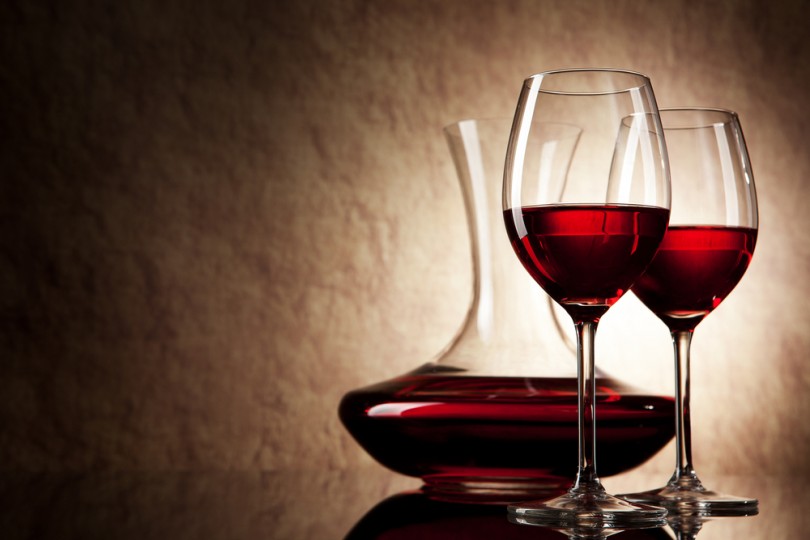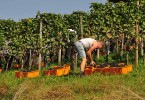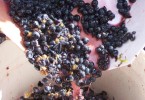Tannins in wine: chacteristics and origin of the phenolic substances
Wine is a rich mix with more or less 600 substances: these substances determine all the characteristics of the wine, from the perfumed notes and the consistency, the acidity and the colour.
The phenolic substances, in particular, are responsible of the colour of the wine: their quantity can vary from some dozen of milligrams per litre in the white wine up to 2 or 3 gr per litres in the red wines that identify also the taste and perfume.
In the red wines, the anthocyanin and tannin are responsible to give the red colour.
Where it is possible to find tannins and how they vary during the time
If the anthocyanin substances are usually located in the peel of the grape, the tannins are abundant also in the pomace and the stalk. These phenolic substances are extracted during the phase of maceration varying according to the acidity of the wine. The young wines, more acid, usually have a bright red colour, thanks to the high presence of anthocyanin.
During the phase of maturation and refining, then, the acidity decreases together with the anthocyanin whereas the tannins increase, the responsible of an orange-dull colour. During the ageing in the barrel, finally, tannin and anthocyanin are combined with the oxygen changing the colour of the wine to a strong red with orange shades.
Astringency
Tannins allow to preserve the wine and give them a bitter taste together with the typical astringency, main characteristic of the great red wines: the astringency is that sense of astringency in the mouth given by the power of the tannins to fix the proteins of the saliva.
The more is the quantity of the tannins in the wine, the more it will be the sense of astringency.
Tannins, however, are not all the same: in the young wines, tannins are under the shape of simple molecules, pretty aggressive and astringent.
With the ageing, instead, their molecule becomes more complex, heavy and less astringent and thus, the ageing thus make the great red wines, more delicate and soft.
How to extract the tannins from the wine
The tannins give to the wine the sense of astringency and structure. Thus, an excess of these substances will make the wine sour and cloying; a lack of them will give as a result a wine without consistency and empty. It is fundamental for the oenologist to carry out in the best way the process of pressing and maceration.
Before the pressing, for instance, it is fundamental to carry out the process of removing the stalk to prevent the releasing of tannic substances contained in the stalks that will give to the wine a bitter and herbaceous taste.
During the fermentation, then the must is in contact with the peels in order to give to the wine the aromatic substances.
The process of maceration can last from 4 to 6 days, to give life to fruity, fresh wines with a weak colour, until 20-30 days if you want to produce wine with a tannic character and with an intense colour, perfect for the ageing.
At the end of the maceration, then, it is possible to go on with the racking to divide the wine from the pomace that are ready to be squeezed. The squeezing foresees to extract the wine in the pomace.
Tannins and barrique
Remind that, besides the tannins that are contained naturally in the grapes, during the ageing in barrique the wood release further tannins, called “gallici” that contributes to add astringency and aroma to the product. The more the barrel is small, the best is the interchange of the aromatic substances. From here derives the saying: “in the small barrel there is the best wine”.
The quality of the tannins
According to the last researches, the phenolic substances have important anti-cancer properties, protective for the heart and anti-cholesterol. A new way to enjoy a good glass of red wine all together.







